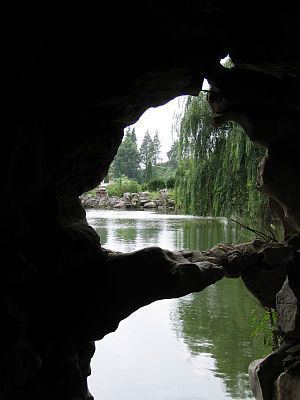 | ||
Grotto-heavens (Chinese: 洞天; pinyin: Dòngtian) are a type of sacred Taoist site. Grotto-heavens are usually caves, grottoes, mountain hollows, or other underground or semi-underground spaces. Because every community was supposed to have access to at least one grotto, there were many of them all over China. They were first organized systematically in the Tang Dynasty by Sima Chengzhen 司馬承禎 (647–735, see Zuowanglun) and Du Guangting 杜光庭 (850-933). The most sacred of these sites were divided into two types: The ten greater grotto-heavens and the thirty-six lesser grotto-heavens.
The ten greater grotto-heavens are as follows:
References
Grotto-heavens Wikipedia(Text) CC BY-SA
